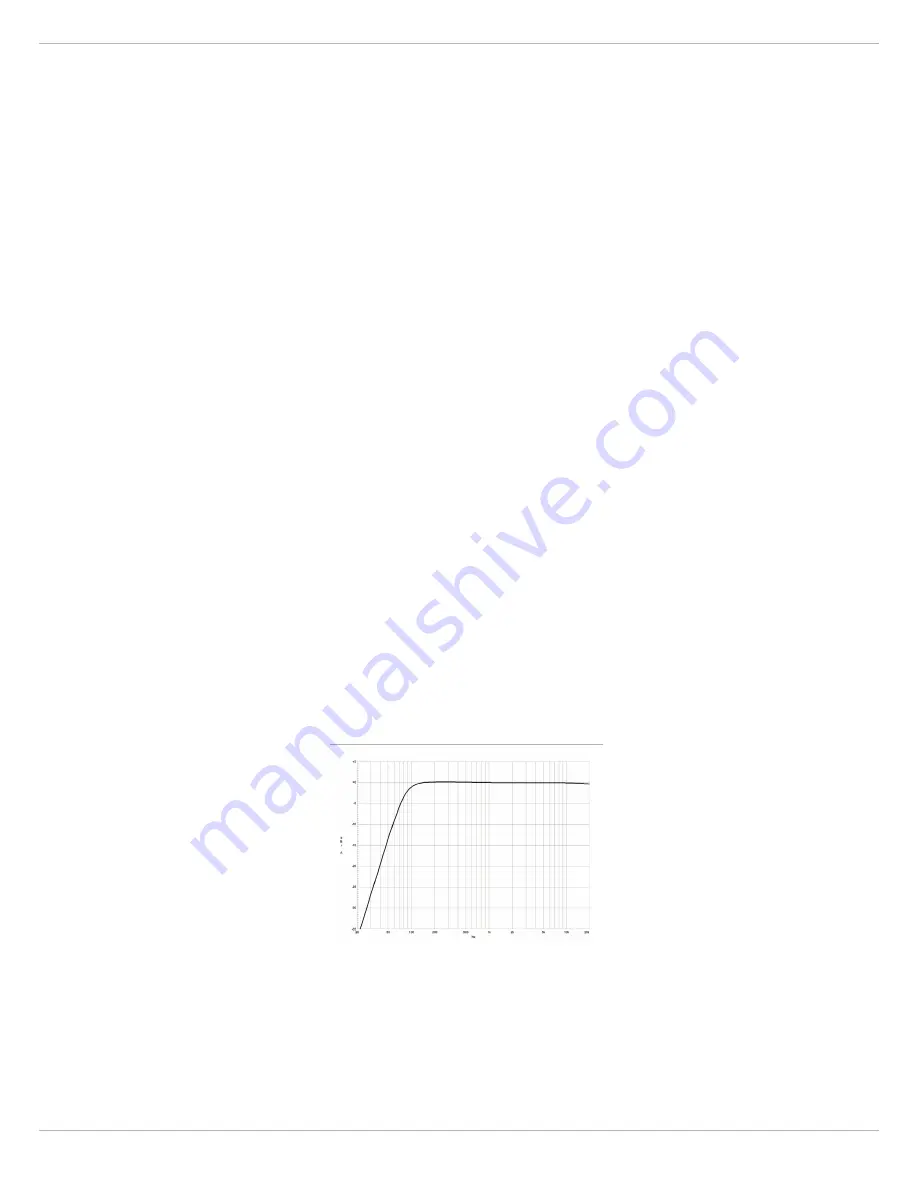
CMS
3
7
HINT: Please, do not connect E-guitars or E-basses with passive, high impedance outputs directly to a LINE input.
The LINE inputs of the CMS – like the Line level inputs of mixers from other manufacturers – are designed
for the connection of the relatively low source impedance of electronic instruments. The reproduction of the
instrument’s original sound characteristics will be unsatisfactory. Connect those instruments using a special
transformer or pre-amplifier with very high input impedance. Musical instruments with an active electronic
output (battery-powered) can be connected without any problems.
3 - GAIN
CONTROL
Rotary control for adjusting a MIC/LINE input’s sensitivity. These controls let you optimally adjust the incoming signals
to the mixer’s internal operation level. Cautious adjusting offers the benefits of an improved S/N-ratio and provides you
with the full bandwidth of the CMS’s outstanding sound capabilities. On the XLR-type connectors an amplification of
10 dB is achieved when the control is set all the way to the left and +60 dB when the control is set all the way to the
right.
Especially when dealing with very low input levels – during vocal recordings and when the speaker is located in a dis-
tance – the high gain is extremely profitable. Using the LINE input, the signal is generally attenuated by -20 dB while
maintaining the total adjustment range of 50 dB. The LINE input’s unity gain – no amplification (0 dB) – is achieved at
the 20 dB mark. The following is meant as a short note for your assistance on how to determine the right input level:
GAIN setting instructions:
1.
Set the gain control and the corresponding channel fader to their minimum values.
2.
Connect the desired sound source (microphone, musical instrument, etc.) to the desired MIC or LINE input.
3.
Start the reproduction of the sound source at the highest volume level to be expected – respectively sing or speak
as loud as possible directly (short distance) into the microphone.
4.
While playing the sound source or singing into the microphone, adjust the input level using the gain control, so
that during the loudest passages the PK LED is just not lit, but the SIG present LED lights constantly. This is the
basic channel setting, leaving you with at least 6 dB of headroom, i.e. you have at least a range of 6 dB before sig-
nal clipping occurs. In case you intend to make further adjustments to the channel’s EQ setting, you should per-
form steps 3. and 4. again afterwards, since changes in the sound shaping section also have an influence on the
channel’s overall level.
4 - LO CUT 80 H
Z
When the LO CUT switch (available in channel 1 to 4) is engaged, frequencies below 80 Hz are attenuated (18 dB octave
slope). In most cases using the LO CUT filter with microphone channels is a good advice, since it efficiently suppresses
popping sounds, rumbling noise and low-frequency feedback. The only exceptions are kick drum and acoustic bass. Ac-
tivating the LO CUT and raising the bass level (LO EQ) provides you with a richer sound, without additional rumbling or
popping noise. Another welcome side effect is, that the power amplifier and the connected loudspeakers do not get
“polluted” with unnecessary low-pitched interference. Your audience will be thankful for the use of the LO CUT filter,
too, since in this way they can enjoy a truly clear, natural, and powerful sound performance.
5 - EQ SECTION
The mixer’s EQ section allows very differentiated shaping of the incoming audio signal within miscellaneous frequency
bands. Turning one of the EQ level controls to the right boosts/amplifies the corresponding frequency range while turn-
ing it to the left lowers/attenuates the signal of that specific frequency band. Before you begin to alter the sound, all EQ
controls should be set to their neutral position, i.e. their marker points straight up (locked in place). Try not to set the
EQ controls to extreme positions. Usually, minor changes are totally sufficient and produce the best results in the overall
Illustration 2-3: LO CUT filter
Summary of Contents for CMS 600-3
Page 1: ...CMS3 CMS 600 3 COMPACT MIXING SYSTEM Owner s Manual Bedienungsanleitung ...
Page 2: ...CMS3 2 ...
Page 14: ...CMS3 14 ...
Page 16: ...CMS3 16 ...
Page 18: ...CMS3 18 ...
Page 37: ...CMS3 37 ...
Page 48: ...CMS3 48 ...
Page 50: ...CMS3 50 ...
Page 52: ...CMS3 52 ...
Page 75: ...CMS3 75 7 1 Dimensions ...
Page 76: ...CMS3 76 7 2 Block Diagram ...
Page 78: ...CMS3 78 Notes ...
Page 79: ...CMS3 79 ...






















